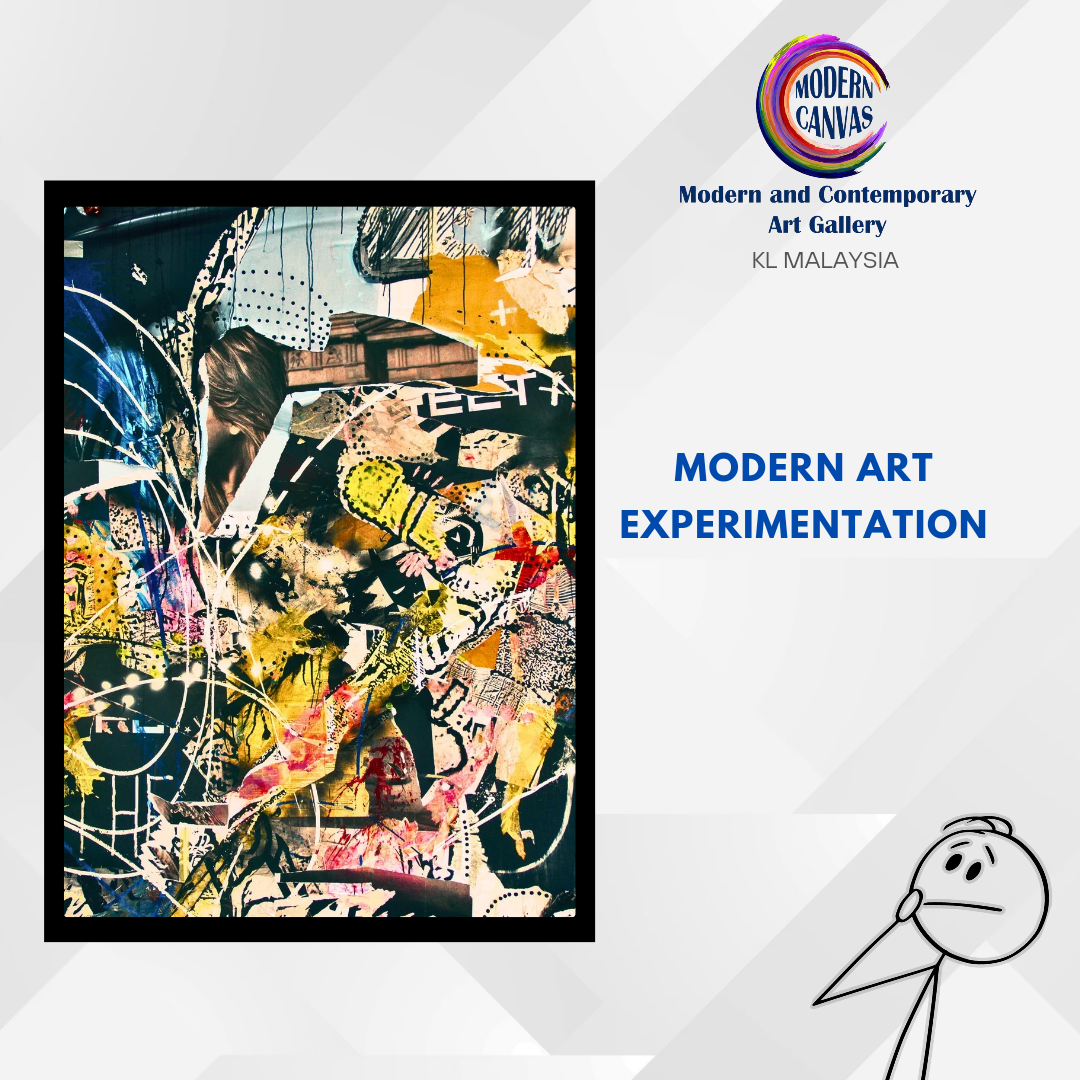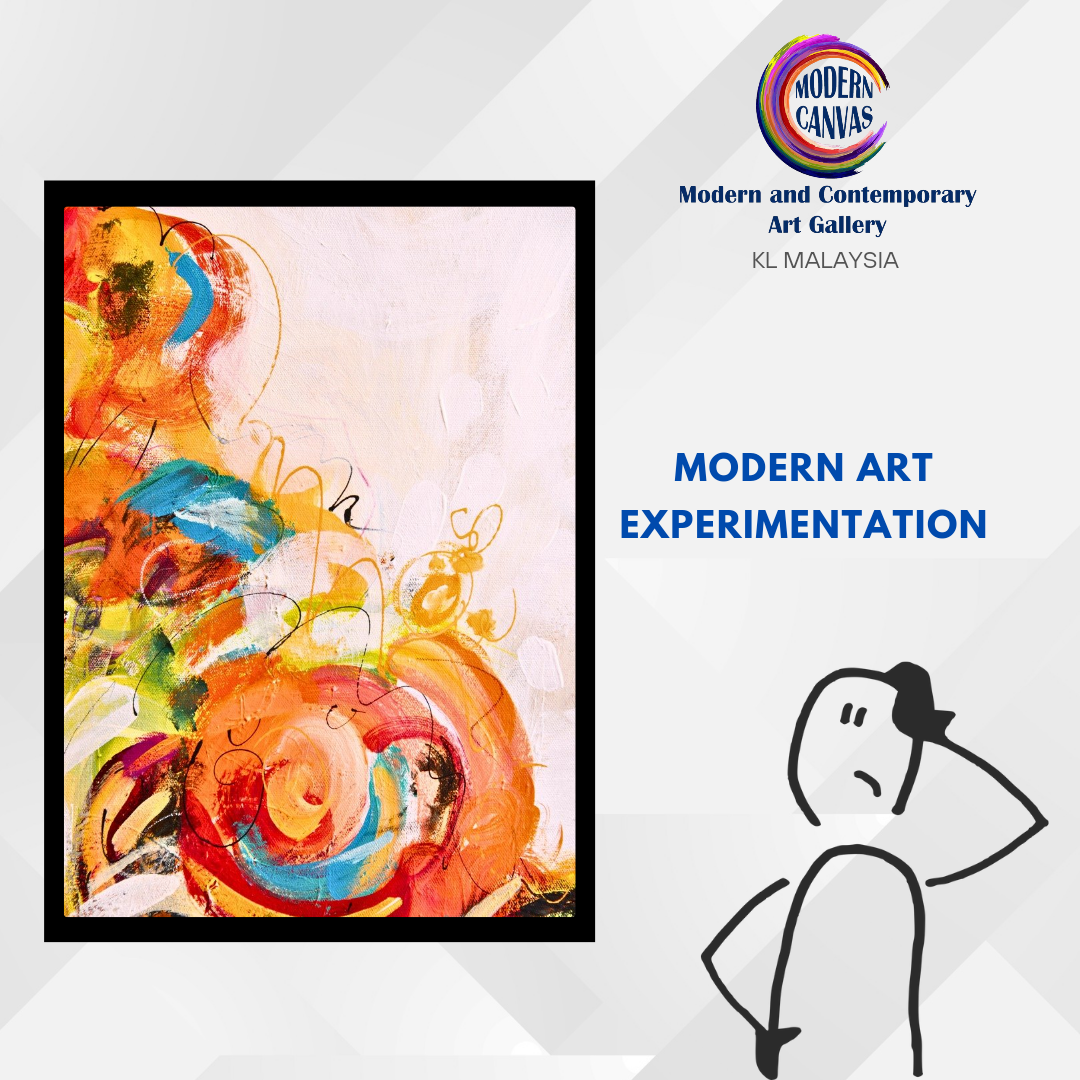Experimentation In Modern Art
The Modern Canvas Art Gallery in Kuala Lumpur Malaysia, aims to play an active role in developing the art scene in Malaysia. Since the Modern Canvas collection would focus on modern art paintings and sketches, the team takes much interest in researching various issues related to modern art. Experts at Modern Canvas Malaysia, explain the status of experimentation in modern art.
Experimentation in modern art paintings plays a vital role in pushing the boundaries of traditional art. Artists explore innovative techniques, materials, and concepts to create unique, thought-provoking works.


Modern Canvas experts have a compiled a list of active directions in which, experimentation is being executed in modern art. Experts confirm that, these processes are being followed currently and more innovation, can be expected to keep happening.
1. Mixed Media and Material Exploration: Modern artists often blend traditional media like oil or acrylic paint with unconventional materials like sand, fabric, glass, or metal. This technique creates a textured, multi-dimensional effect, challenging the flat surface of traditional paintings. Modern Canvas mentions that, modern art works in this category, are best seen in an art gallery where the full effect of the processes involved can be appreciated.
2. Abstract and Non-Representational Forms: Moving away from realistic depictions, many artists experiment with abstract forms, shapes, and colors. These works focus on conveying emotion, movement, or ideas rather than recognizable subjects, allowing viewers to interpret the art personally. A number of exclusive art works in the Modern Canvas collection, explore abstraction and distortion.
3. Layering and Collage: Layering different materials or adding elements like photos, newspaper clippings, or fabric scraps can create a collage effect in paintings. This technique adds complexity and depth, as well as a mix of visual and textual narratives within a single piece. These experimental technics in modern art, are becoming increasingly popular with young artists.
4. Color Theory and Unconventional Palettes: Experimenting with bold or unusual color combinations can produce unexpected visual effects. Some artists push color theory boundaries, creating harmony or discord that challenges traditional aesthetic expectations. A good example is the Landscape painting by Avinash Chandra now in the Modern Canvas collection. The artist fills up the entire frame with red. Interpretation is left to the observer.
5. Incorporating Technology and Digital Techniques: With tools like projection mapping or digital printing, artists can blend digital art techniques with traditional painting. For instance, they may paint over a digitally altered photograph or use projections to add a dynamic, changing element to the artwork. Experts from the Modern Canvas Art Gallery in Kuala Lumpur, have repeatedly stressed that the fusion of digital modern art and conventional modern art, has begun and will be increasingly visible in the near future.
6. Drip, Splash, and Spray Techniques: Techniques popularized by artists like Jackson Pollock involve dripping, splashing, or spraying paint onto the canvas. These methods embrace spontaneity, allowing the paint to create unpredictable patterns and forms, emphasizing movement and energy.
7. Minimalist and Monochromatic Experimentation: Some artists experiment by reducing elements to their bare essentials, focusing on a single color or simple form. Monochromatic paintings, for instance, explore subtle tonal shifts or texture within a single hue, challenging viewers to appreciate nuance.
8. Text and Typography: Integrating words, phrases, or symbols into paintings adds a new dimension, allowing artists to make direct statements. This is often seen in pop art and street art, where text becomes both an aesthetic element and a narrative device.
9. Illusion and Perspective Tricks: Playing with depth perception, artists use optical illusions, distorted perspectives, or anamorphic techniques to make images appear different from various angles. This experimental approach adds a surreal, almost interactive experience.
10. Layered Transparency and Light Play: Using layers of translucent materials or experimenting with light, artists create paintings that interact with their surroundings. These works might change appearance under different lighting conditions, adding a dynamic and ethereal quality.
Each of these experimental techniques allows modern artists to redefine what a painting can be, encouraging viewers to engage in new, imaginative ways. This spirit of experimentation keeps modern art dynamic, surprising, and ever-evolving.
Modern Canvas stresses that experimentation in modern art is a journey, it is often fuelled by a desire to innovate. It is therefore clear that, the list in this report is not exhaustive. Young artists are keen to create unique works of modern art, and art lovers are ready to review and interpret innovative creations in modern art.
